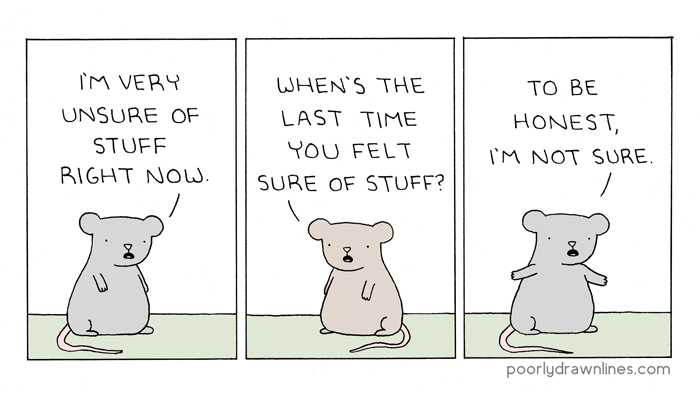Our customers (and us) live in worlds characterized by information overload, rapidly changing circumstances, increasing demands, rising management expectations, scarcer resources, increasing scale, disruption, distraction, and complexity. It’s impossible to avoid feeling overwhelmed, unbalanced, and distracted.
Getting things done, getting the support and resources to move forward is increasingly difficult. They must coordinate efforts across more people, they must get approvals and engage more people across the organization–sometimes extending outside the organization to partners, suppliers, customers.
Increasingly, their days are driven by interruptions, they are always on–responding to emails or on calls 7/24. Risk, uncertainty, shifting priorities are the norm.
They are no longer capable of being able to understand and manage all the things they need to understand to get things done within the organization–at all levels.
It would be an understatement to suggest both they and we are now living in the time of the “Challenged Customer.”
It’s important to think how human beings, facing these challenges deal with them.
For many, it’s natural to ignore them, to avoid them, to try to refute them. Some find ways of insulating themselves, perhaps pretending they don’t exist. These become protective mechanisms, things people do to deal with things that become too difficult/complex to understand.
For some, the only way to deal with these issues is to downsize them. Rather than addressing the core issues, they address small parts of them. Doing what they can, what they understand, what is within their abilities to do.
Others try to look for models of similar situations. Either things they have experienced before (though that experience may no longer be relevant or appropriate), or how others are dealing with similar issues.
Whatever the approach, people struggle with making sense of the circumstances they face.
And here, I think, is the opportunity for sales people to help these people deal with overwhelm and complexity.
The opportunity is to help customers make sense of what they face, to help make sense of what they’d like to do, and to make sense about how to achieve it. We have the opportunity to help customers how things fit together, to look at what’s important/not important/pure distraction. To help them sort through the overwhelming amount of information, to help them sort through the disparate views, and navigate to a solution or course of action.
The challenge for sales people, is many of our current methods, processes, approaches prevent us from doing these things. We think the buying process is structured, disciplined, rational. We think, at some point, people of determined their goals, objectives, and prioritized their needs and requirements. We think people know, at least broadly, what they are looking for in a solution. We tend to think we make it easier for customers by simply providing more relevant information.
But the Challenged Customer isn’t there and is unlikely to get there without a lot of help.

Leave a Reply